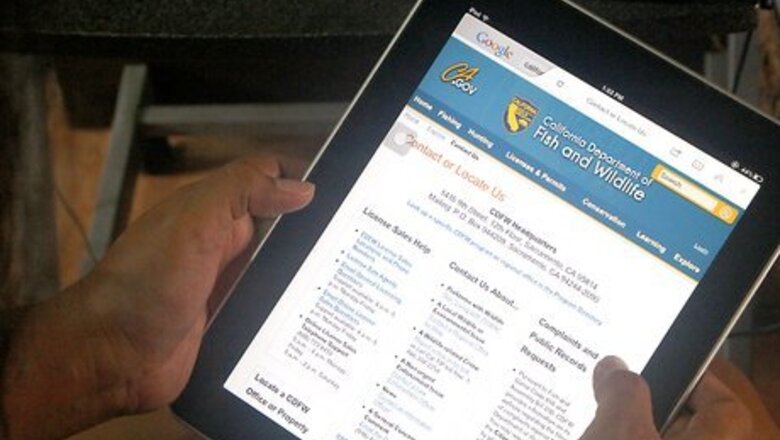
views
Harvesting Wild Snails

Check with your local wildlife agency before you harvest the snails. Some species of land snails may be illegal to kill where you are, so call your local wildlife agency and check that it’s okay to harvest them first. You may also be able to find this information on their website. Not all snails are safe for consumption. The helix aspersa, Cepaea nemoralis, Cepaea hortensis, Achatina fulica, Helix aperta and Otala punctata are all edible.
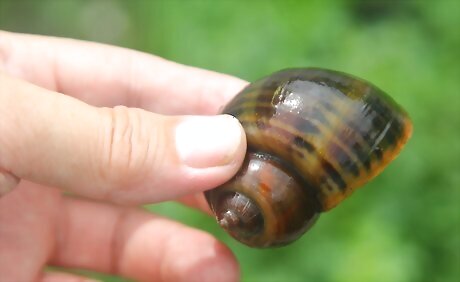
Collect the largest land snails you can find. You can find edible fresh snails in your own backyard or from certain grocery stores. If you don’t have snails near you, there are also snail farms you can visit to harvest them. Inspect the snails for any cracks and discoloration like red or pink and avoid them. You should only collect live snails. Dead snails could contain parasites and bacteria. If you can’t find fresh snails around you, purchase a can of snails from the grocery store or online instead. You don't have to do the steps in the first section if you buy pre-prepared snails in a can. Smaller snails will procreate later and increase the snail population on your property.
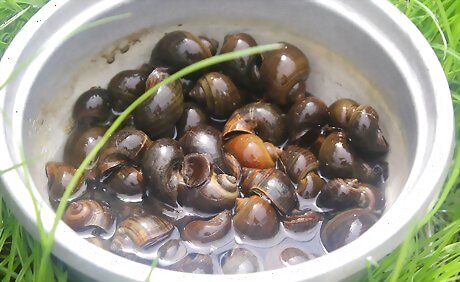
Keep the snails in a bucket for a week. Fasting the snails will force them to empty their digestive tracts and will make them more tender. During this time, provide the snails with a small pool of water so that they don’t die. Wrap the top of the bucket with plastic wrap and punch holes in it. The plastic wrap will prevent snails from escaping the bucket. It’s necessary to fast the snails or they won’t be edible.
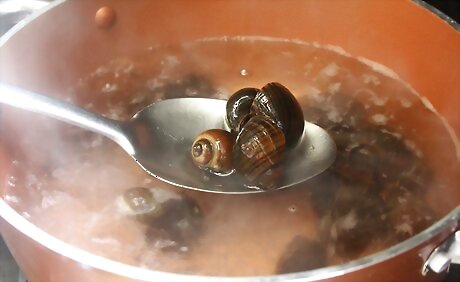
Place the snails in a salted pot of boiling water for 90 minutes. Bring a large pot of water to a boil and place the snails in the water. Reduce the heat to a simmer and continue to boil them. Stir the snails every 10-15 minutes while they cook. Add a sprig of thyme and 2-3 bay leaves to the water to add flavor.
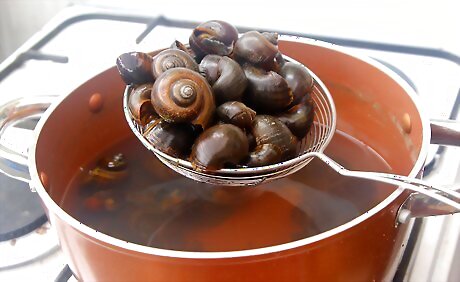
Remove the snails from the pot and wash them off. Put the snails in a bowl and rinse them thoroughly with cold water. Wash each individual snail and set them aside.
Preparing the Snails

Remove the snails from the shells if you’re using fresh snails. Stick a small fork or thin knife into the shell and detach the flesh from the shell. Pull on the meat to remove it from the shell. Set the snail flesh and the shells in 2 separate piles. Avoid chopping the meat up as you’re extracting it.
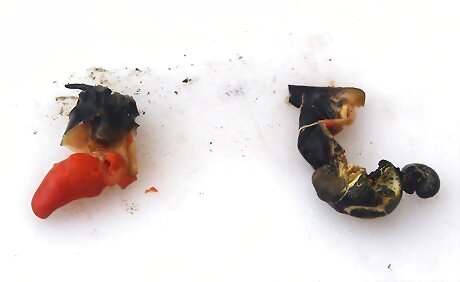
Cut off the skin and black tail if you're using fresh snails. The tail and skin on the snails are inedible and should be removed before you eat it. Use a knife to cut off the black tail, then carefully peel away the snail's skin.
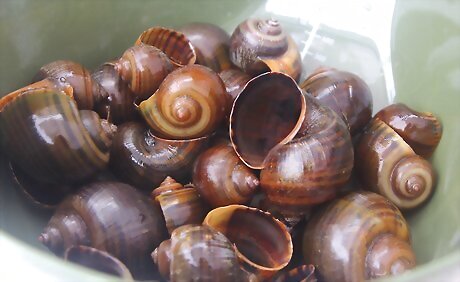
Purchase snail shells if you’re using canned snails. Canned snails don’t come with shells, so you’ll have to buy them separately from a grocery store or online. Run the fresh or purchased snail shells under warm water to remove dirt before you start cooking the escargot. You can typically find empty snail shells on websites like Amazon.

Drain and wash the snails if you’re using canned shells. Drain the can of all the liquid and run the snails under warm water. Set the snails aside and pat them down with a paper towel to dry them. Drain and wash canned snails when you're ready to cook them. Don't store them after you drain and wash them.
Cooking Escargot with Garlic Butter
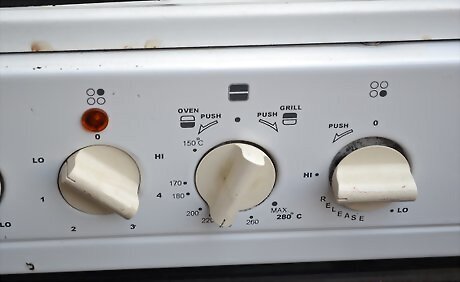
Preheat your oven to 400 °F (204 °C). Turn your oven on to 400 °F (204 °C) and wait for the preheating light to turn on or for your oven to beep. Preheating the oven before you cook the snails will ensure an even cook.
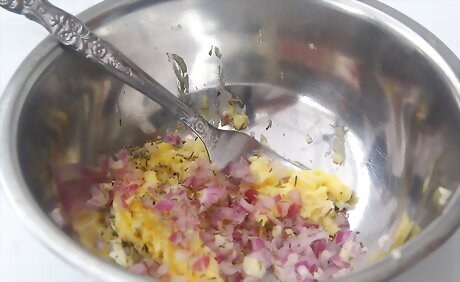
Mix the garlic, shallots, and parsley with a stick of butter. Place a stick of butter into a bowl and then dump the garlic, shallots, and 20 grams (0.71 oz) of parsley in the bowl. Use a spoon to thoroughly mix the ingredients together until the butter softens and turns green from the parsley. You can also pulse the ingredients in a food processor rather than mixing the butter manually.
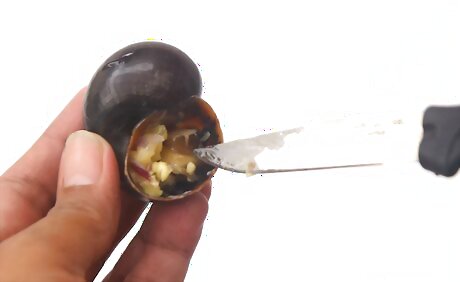
Fill the shell with garlic butter and a snail. Use a small knife to smear some of the garlic butter on the interior of the shell. This will serve as the bed that you place the snail on. Push a snail inside of the shell so it rests on the butter. Don’t push the snail all the way down into the shell or it will be hard to get back out when you eat it.
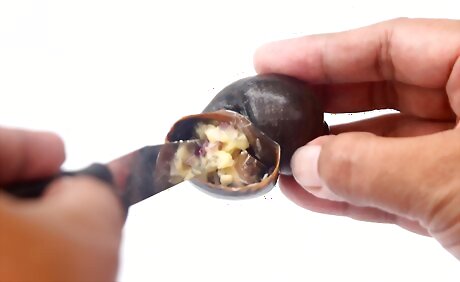
Put more garlic butter over the snail. Put a blob of garlic butter over the top of the snail and smooth the butter over. Place the snails an equal distance apart on a baking sheet, or place them in a traditional escargot dish. Your snails are ready for baking. The butter should run flush with the hole in the shell.
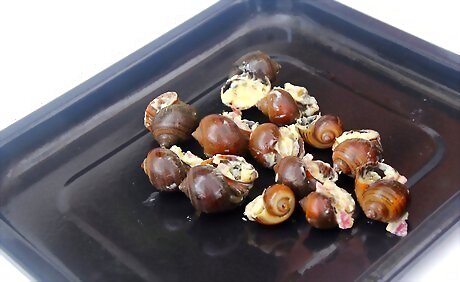
Bake the shells at 400 °F (204 °C) for 10 minutes. The butter will melt and brown while it cooks. Make sure not to overcook the snails or they will come out tough. When the snails are done, they should smell fragrant and the butter should have fully melted. To eat escargot, use a small fork to scoop the snail from the shell.
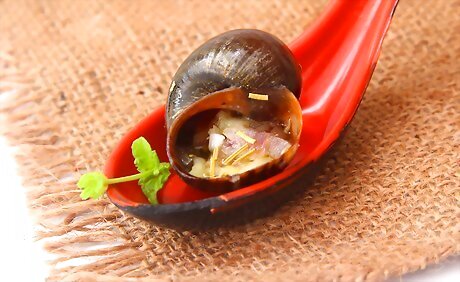
Serve or store the snails. Let the snails cool for 5 minutes and serve them. It’s traditional to serve the escargot over a bed of rock salt. If you don't want to eat the snails immediately, you can store the cooked escargot in the refrigerator for up to 2 days. To reheat escargot put it back into the oven at 400 °F (204 °C) and bake it for 10 minutes. Store the shells in an airtight container.


















Comments
0 comment